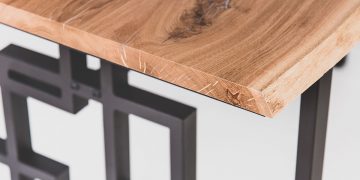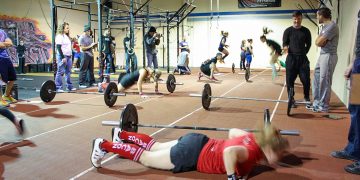If you’ve ever fallen down the rabbit hole of looking for simple tips to improve the design of your website, there’s a good chance you were left feeling frustrated and overwhelmed. Not only is there more advice than you know what to do with online, but so much of it is contradictory.
And, even more frustrating, a lot of the “secrets” for effective web design ask you to just “trust your gut” or “know your audience” – both of which are vague and rather unhelpful!
Of course, writing off web design altogether is not an option. If you want your business to have a chance online, then it needs great design.
Not only does a web design company help develop a website that improves the way people view and understand your brand, it can also give you a critical edge over the competition in terms of search, visibility and overall user experience.
What your website looks like and how it works is how your business is perceived online.
If you manage to give off a great first impression, then you might just have scored yourself a loyal customer. If, however, your website flubs its meet-and-greet, then there’s a good chance you just spent valuable resources to get someone in the door – and then watch them disappear back out.
With each page of your website a potential first contact point with your audience, it’s more important than ever to enlist the help of web design services for small businesses.
Not only will smart web design help you better convey your message, but it will also improve the likelihood that your website is found and consumed. Just remember, not all affordable web design services are equal.
While some companies will focus solely on aesthetics – using an artistic approach to create a visually stunning website – others choose a more pragmatic approach, meaning they make decisions based on data and research.
It is possible to find a web design company that offers the both of best worlds, but if you were forced to choose only one approach, the safest bet is to go with a company that understands what works versus what doesn’t – not just what’s attractive and what isn’t.
After all, a beautiful website is very much in the eye of the beholder – and it does absolutely no good if it’s never found or if its message is convoluted and confusing.
According to a recent survey published online, nearly 50% of all people online say that the design of a website directly influences how they perceive a business: The better the design, the more credible the business. And, when you’re competing against loads of other websites for business, it’s no surprise that the most credible ones win in terms of conversion.
Why would someone give their information or money to a business they don’t really trust?
Of course, website design is more than just credibility. When done the right way, the design of your website can improve your conversion rates and your bounce rates, helping you make more money from each and every visit your site gets.
To create the right foundation for your website’s design, you have to start with a blueprint – a good plan for what you want and what you need can direct the overall design process, ensuring that you get the results you’re wanting.
At the heart of this plan should be your website’s overall purpose: What is it here to do?
The more definite you can get with your website’s goal, the easier the decision-making process of design will be. But before you decide to start drafting up your website design plans based on what you think will work for your audience, take a moment to dive into these ten objective tips for strategic website design.
Thanks to research and the ability to track results online, you can actually know what works best for website design – and what doesn’t.
By following the tips below you can get a headstart on your website blueprint, adding in your personal touches without having to cross your fingers and hope that your investment pays off.
10 Objective Website Design Tips for Online Success
Tip #1: Prioritize The Speed Of Your Website
If there’s one thing experts will agree on about good website design, it’s making sure that your website can keep up with user expectations.
When your website is fast enough, it improves bounce rate, user experience, conversions, and overall revenue.
Of course, if your website drags when it’s pulled up, you can almost guarantee that no one will stick around to see what it has to offer – regardless of how beautifully designed and organized it is.
And, like users, search engines also care about the speed of your website. After all, it’s their job to make sure the results they provide make searchers happy. If you care about where your website ranks in searches, then doing everything you can in the design to help it move quickly is one of your top priorities.
If you’re unsure if your website is slow, one of the best things you can do is utilize a free tool to test. There are several free tools to choose from and each will bring back results showing you how fast your website loads and responds.
If you come back with less than optimal results, there are some strategies you can start implementing with your current website to help speed it up. One of the easiest ways to improve the performance speed of your site is to upgrade your hosting plan.
Rather than only paying for the cheapest plan possible, it’s worth the investment to upgrade to a VPS (virtual private server) or a dedicated server. Once you make the switch, you’ll start seeing results almost instantly.
Another thing you can do to make your website faster is to examine the images you have on it.
The bigger your pictures are, the slower they will load and the faster your visitors will leave. You can battle this problem in a few different ways, including shrinking your largest file sizes, cropping your images or simply removing the number of images you have on each page.
What you don’t want to do is remove all of the images – they’re important to the design.
Instead, look for ways to reduce the resolution of the images you’re using or even compress pictures in order to make image data storage more efficient.
Tip #2: Understand The Power Of The Fold
While you can get caught up in the debate online about whether or not “the fold” still exists, a more practical approach is to look at which design strategies are working best.
“The fold,” which refers to everything your visitor sees on your website before scrolling down, is different depending on which device your website is being viewed on. This means that you need to be looking at what shows up above the fold across devices, from desktop to tablet.
According to a 2018 report published online, all online users will spend nearly 60% of their time above the fold on websites. Smart website designers, then, recognize how important it is to put your most valuable and compelling content in a place that will get seen.
By prioritizing what needs to be seen in order to get the results you’re looking for, you can create a website design that leverages the power of above the fold content.
For the best results, be sure super clear and descriptive headlines are apparent in the fold. Immediately, your visitors should be able to tell what your website is offering and what the benefits are. Part of this headline needs to include an engaging call-to-action (CTA).
Your CTA clearly tells your visitors what they need to do next – and it means the difference between getting a conversion or not. And, because images and videos are so engaging, incorporating media into your above the fold content is also important.
Just be sure it’s not stock!
Tip #3: Reduce The Amount Of Choices On Your Website
Known as Hick’s Law, the more choices your visitor has, the longer they will take to make up their mind. Online, you don’t want people mulling over their decision because their next option is just a click away.
In order for your website to perform well, it needs to encourage fast decision making, which means dramatically reducing the choices they have when they hit your pages. If your visitor has a limited amount of options to choose from, they are actually much more likely to buy than if they have several to consider.
In terms of website design, limiting choices can apply to nearly every function and feature.
For starters, look at your menu: Is there a way to minimize how many pages are shown? Then, move to the CTAs on your pages: Rather than asking visitors to do multiple things, make sure each page just has one CTA and one goal.
While these changes might seem simple, they are proven to boost your online conversions fairly significantly.
Tip #4: Simplify Your Website Design
Not only should you minimize the amount of choices on your website, but you should also minimize the amount of content in general, especially when it comes to visual clutter.
Just like a messy house can cause anxiety, so can a website that feels cluttered. And, if Google recognizes this trend, it means that visually complex websites won’t rank as well in search results.
To “Marie Kondo” your website, make sure that you minimize visual distractions, such as cramped sidebars vying for attention. And while it can feel exciting to venture into the world of brand new design layouts for your website, remember that people really do like simplicity.
Rather than innovating a layout, which can make your visitors feel unsure and filled with trepidation, stick to proven, standard design formats.
There are plenty of other ways you can innovate in design that won’t scare away your potential customers.
Tip #5: Don’t Put Your Visitors On A Carousel – Or Slider
If the last tip didn’t come through loud and clear, here’s another reminder: Your website’s visitors want their experience to be as simple as possible.
While website owners might love the way a photo carousel or slider looks, the truth is that they really don’t impact the performance of your website. And, considering how image-heavy these types of elements are, there’s a good chance they are weighing your website down in terms of speed, too.
According to a study done by Notre Dame University, the first image seen in a sliding or carousel-type element will receive almost all of the interaction – a somewhat shocking 90%.
All of the other graphics and images and CTAs? Well, it turns out that your users ignore them almost completely.
Remember, effective website design revolves around keeping the goal of each page as cohesive and simple as possible. When in doubt, skip the bonus or flashy features in lieu of one singular element.
Tip #6: Fuel The Scrolling Addiction
Likely something to do with our social conditioning to engage on platforms like Instagram, Twitter and Facebook, today’s online user wants to scroll – not click.
When designing your website, then, look for ways to actually feed your visitor’s desire to scroll, which means putting more of your content on one page rather than giving them the option to click to view.
It turns out, creating long pages – even ones that are more than twenty times the length of an original “short form” sales pages – can increase the conversions you get on your website – even up to 30%!
Tip #7: Show People Where You Want Them To Focus
In order to create an effective website, you need to ensure that your visitors have a great experience. User experience is paramount to your business’s success, which is why finding ways to make sure they are seeing and doing what you want is so important to website design.
While there are a lot of different ways to emphasize certain elements of your website’s pages, one of the most effective is using subtle visual cues. For example, you can use an image of a person or animal looking where you want your visitor to look, rather than looking straight ahead.
Subconsciously, humans look where others are looking, which is why finding ways to guide their attention is actually easier than you may have realized.
Of course, it’s also possible, and sometimes just as effective, to show visitors where you want them to focus by implementing less subtle design, like arrows pointing directly to where you want them to go next.
Either way, guiding your visitor through the experience is a great way to keep them focused and engaged.
Tip #8: Use People, Not Stock Images
Most websites understand the importance of images, but that’s as far as the knowledge seems to go. While a lot of people think that any image is better than no image, the truth is some types of images on your website can actually do more harm than good.
Case in point: stock photos. More than ever, people can sense if an image is stock or not from a mile away. And, if they perceive an image as generic and inauthentic, then you’re actually damaging your brand’s reputation.
When choosing images for your website, avoid using stock images at all costs.
And, when selecting images for your pages, remember that people engage with people. The more you can use images of real people, like employees or customers, the better. Not only will your visitors spend more time on your website because of these types of images, but they’ll also be much more likely to convert because of them.
For example, according to a study performed by Basecamp, conversions on their website increased by a whopping 102.5% when they changed their landing page from a text-based one to one that featured a smiling person in the background.
Tip #9: Understand How Lists Work
Using lists throughout the copy on your website helps to break up big chunks of text and allows visitors who want to skim to do so more effectively. The problem, however, with lists is that people skim them, too.
While you can make important information easier to consume by formatting it as a list, whether numbered or bulleted, only the items at the top and the bottom of the list are likely to be read thoroughly.
Also known as the “serial-position effect”, the first and the last items in a list will be remembered more often than anything placed in the middle.
The takeaway? Put your most important, most compelling information at the top and bottom of your lists. Choose the two items from your list that you want everyone to remember and repeat, and bookend your list with both.
Tip #10: Take Advantage Of The Conformity Bias
People like to do what other people are doing. Or, in other words, they like to conform.
Website design that uses this conformity bias to its advantage puts social proof, like testimonials and reviews, front and center for other people to see.
The more your visitors see that other people are purchasing your products or enjoying your services, the more likely that they will feel confident to join in too.
Another way to leverage the conformity bias? Add small features to your website like social share counters and mentions.
Effective website design comes in all shapes and sizes, which is why figuring out what works for your business can feel complicated.
But when you analyze what’s really working across industries, you discover patterns – ones that you can use to create a website that does its job by getting you more customers and more sales.
To learn more about effective website design and how to best implement these objective, research-based strategies, get in touch with our team of professional designers at FreshySites!





